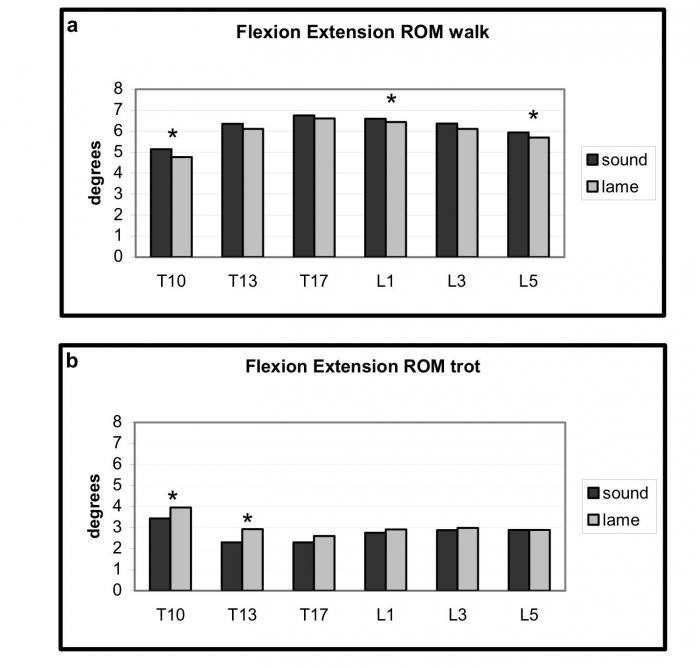
Effect of induced forelimb lameness on thoracolumbar kinematics
In additon to the article about: Effect of induced hindlimb lameness on thoracolumbar kinematics, this study provides equal information. Except this one focusses on the effect of induced forelimb lameness on back kinematics, rather than induced hindlimb lameness.
At walk the overall ROM was reduced rather than increased. This may reflect on overall increase of stiffness of the back as a response to very mild pain sensed by the horse. The flexion extension (F-E) range of motion was significant increased at trot in the lame condition. This was most evident at T10-T13. An increased flexion and lowering of the neck occurs when landing on the sound limb. During lame diagonal stand phase T10-T17, L1-L3 and L5 was more extended and T10-T13 was more lateral bend towards the lame side.
A low grade subtle lameness and their effects on back kinematics are difficult to detect in the clinically setting. Details studies are necessary to understand fully the effects on back kinematics. The study method was equal to the earlier mentioned article. Only the modified shoe to create limb lameness was tied to the forelimb instead of hindlimb.
At trot the lame limb was significantly unloaded (decrease of 11,5%). No significant changes in stride length or protraction- retraction angle was found. A compensatory mechanism occurs, namely: the vertical force of the lame limb shifts to the hindlimbs in the lame diagonal and to the sound forelimb during the sound diagonal.
> C.B. Gomez Alvarez et al; Equine veterinary journal; 2007 39 (3) 197-201. All rights reserved to Department of Equine Sciences, Faculty of Veterinary Medicine, Utrecht University, Yalelaan 112, NL-3584 CM Utrecht, The Netherlands. Click here for the full-text article

(Image by: paardenwelzijnscheck.nl)

